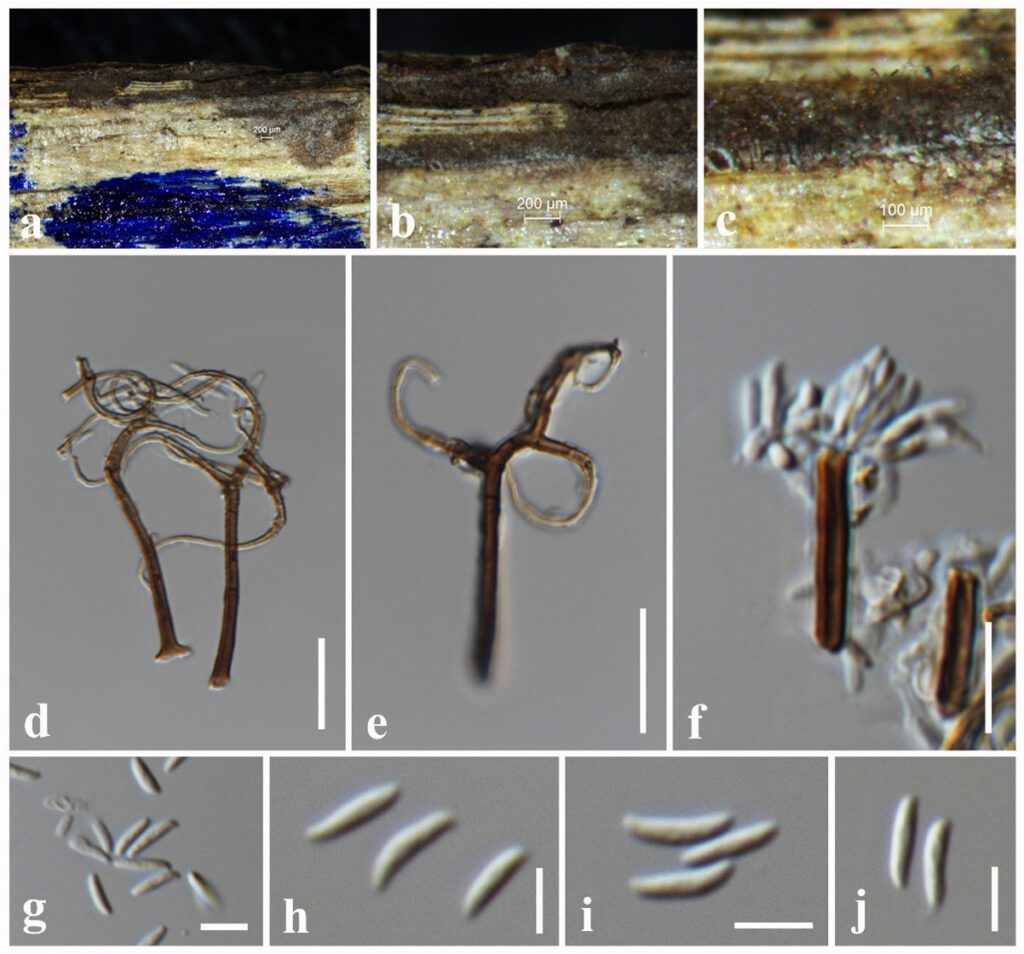Gyrothrix oleae Crous, Persoonia 43: 305 (2019)
Index Fungorum number: IF832895; MycoBank number: MB 832895; Facesoffungi number: FoF 10669
Saprobic on dead twigs attached to Desmos chinensis. Sexual morph: Undetermined. Asexual morph: Mycelium 1–2.5 µm diam., hyaline, branched, septate, smooth hyphae. Setae 60–100 µm long, 2–3 µm diam., brown, subcylindrical, erect, multiseptate, thick-walled, verruculose to warty, apex spirally curved, apical region frequently with curved lateral branches, base bulbous. Conidiophores reduced to conidiogenous cells. Conidiogenous cells inconspicuous. Conidia 4–8 × 1.3–2 ( = 6.5 × 1.7 µm, n = 30), hyaline, fusoid, inequilateral, inner plane flat, outer plane convex, apex subobtuse, base truncate, aseptate, smooth.
Culture characteristics – Colonies on PDA reaching 25 mm diameter after 2 weeks at 25°C, colonies from above circular, margin lobate, flat, margin entire, slightly raised with aerial mycelium, cream; reverse: dark brownish grey.
Material examined – THAILAND, Chiang Rai Province, dead twigs attached to Desmos chinensis (Annonaceae), 8 March 2019, N. I. de Silva, DC 8 (MFLU 21-0220), living culture, MFLUCC 21-0215.
Known hosts and distribution – On leaves of Olea capensis and Diospyros whyteana in South Africa (Crous et al. 2019).
GenBank accession numbers – ITS: OK284459, LSU: OK179731, tef1: OK322700.
Notes – Gyrothrix oleae was introduced by Crous et al. (2019) on the leaves of Olea capensis in South Africa. In this study, one of our new isolates (MFLUCC 21-0215) clustered with the ex-type (CPC37069) and another strain (CPC 37063) of G. oleae as a monophyletic clade. The new isolate (MFLUCC 21-0215) shares similar morphological characters with the type species in having similar size, hyaline and fusoid conidia (Crous et al. 2019). Therefore, based on morphology and phylogenetic affinity, we identified our strain as G. oleae, the first report from dead twigs of Desmos chinensis in Thailand.

Figure 1 – Gyrothrix oleae (MFLU 21-0220). a–c Specimen. d, e Setae. f Conidiogenous cells. g–j Conidia. Scale bars: b = 200 μm, c = 100 μm, d–f = 20 μm, f = 10 μm, g–j = 5 μm.
